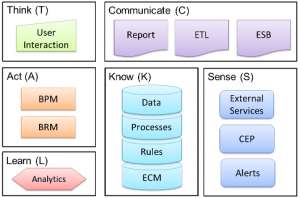Initial Time to Build? Vision to Release in Days? Those Aren’t Relevant Measures for Business Agility!
Tuesday, April 15th, 2014I routinely receive emails, tweets and snail mail from IT vendors that focus on how their solution accelerates the creation of business applications. They will quote executives and technology leaders, citing case studies that compare the time to build an application on their platform versus others. They will make the claim that this speed to release proves that their platform, tool or solution is “better” than the competition. Further, they claim that it will provide similar value for my business’ application needs. The focus of these advertisements is consistently, “how long did it take to initially create some application.”
This speed-to-create metric is pointless for a couple of reasons. First, an experienced developer will be fast when throwing together a solution using his or her preferred tools. Second, an application spends years in maintenance versus the time spent to build its first version.
Build it fast!
Years ago I built applications for GE in C. I was fast. Once I had a good set of libraries, I could build applications for turbine parts catalogs in days. This was before windowing operating systems. There were frameworks from companies like Borland that made it trivial to create an interactive interface. I moved on to Visual Basic and SQLWindows development and was equally fast at creating client-server applications for GE’s field engineering team. I progressed to C++ and created CGI-based web applications. Again, building and deploying applications in days. Java followed, and I created and deployed applications using the leading edge Netscape browser and Java Applets in days and eventually hours for trivial interfaces.
Since 2000 I’ve used BPM and BRM platforms such as PegaRULES, Corticon, Appian and ILOG. I’ve developed applications using frameworks like Struts, JSF, Spring, Hibernate and the list goes on. Through all of this, I’ve lived the euphoria of the initial release and the pain of refactoring for release 2. In my experience not one of these platforms has simplified the refactoring of a weak design without a significant investment of time.
Speed to initial release is not a meaningful measure of a platform’s ability to support business agility. There is little pain in version 1 regardless of the design thought that goes into it. Agility is about versions 2 and beyond. Specifically, we need to understand what planning and practices during prior versions is necessary to promote agility in future versions.
